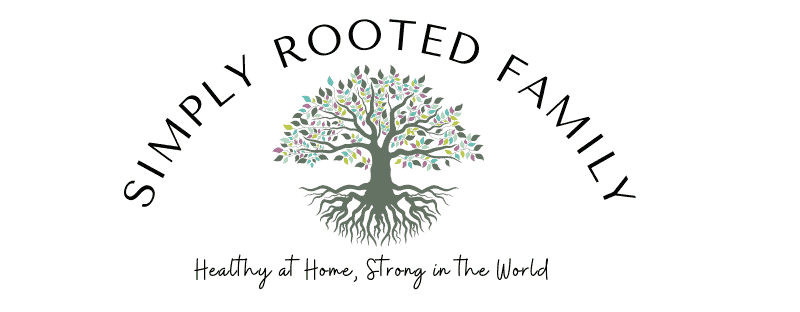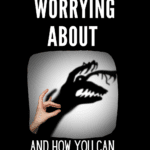I watched my four year old whip around our driveway on his red scooter- taking sharp curves like a pro. He quickly approached the steep hill at the edge of our yard.
I saw my risky son stare down that grassy roller-coaster. His little mind was evaluating the situation.
Instead of making the descent, he started to propel himself backwards onto the flat driveway.
Fear is often thought of as a negative mental state, but it is a very necessary emotion. In best case scenarios, it keeps us out of danger; however, sometimes the fears get in the way of daily life.
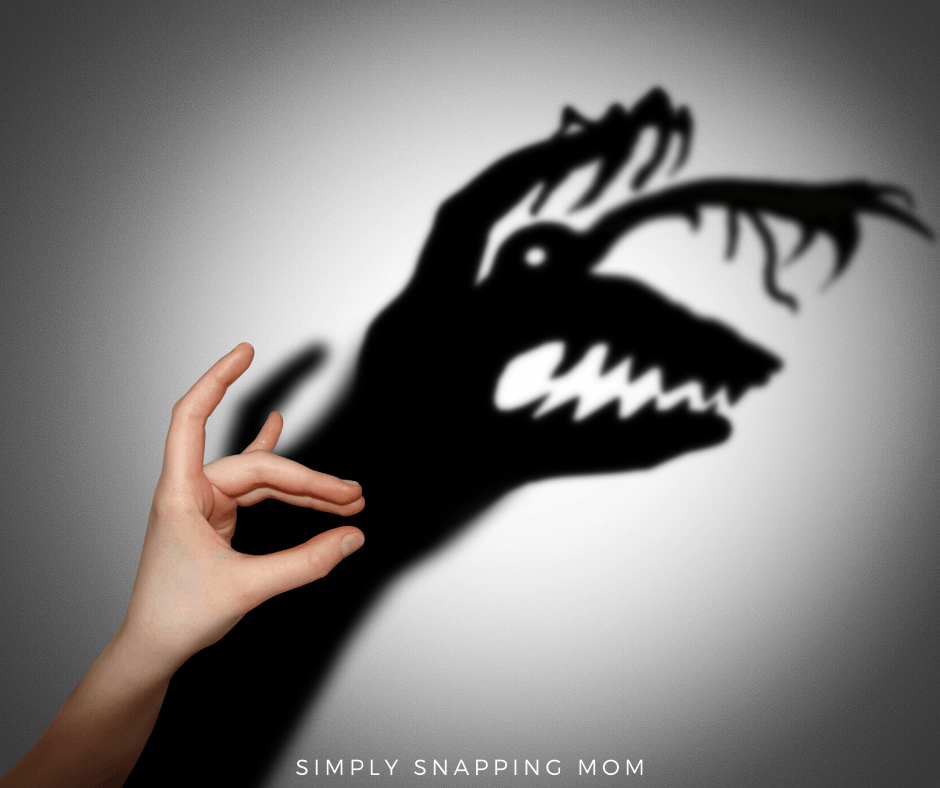
The Biology of Fear
While we understand the WHY behind fear, it is helpful (and super interesting to this research addict) to understand the HOW.
According to Harvard Medical School, when people encounter something that frightens them, a part of the brain, called the hypothalamus, reacts by releasing a series of chemicals to the sympathetic nervous system. In the sympathetic nervous system, signals are sent out to release ‘stress hormones’, like adrenaline.
Adrenaline, and similar hormones, kick the body into a fight or flight mode. The body becomes tense, heart rate and blood pressure increase, and the pupils dilate to let in more light. Nonessential systems, such as the immune system and digestion system, turn themselves off to allow more energy go towards emergency function.
All of these changes lead to symptoms such as fatigue, upset stomach, difficultly concentrating, and an impaired immune system.
You may also find helpful: Printable Emergency Preparedness Kit for Families

Nowadays, we don’t have to worry about the same things that our ancestors fear, such as late-night saber-tooth tiger attacks; therefore, we often fear things that are not deadly (like public speaking and socials situations).
Though this may not sound as frightening as a wholly mammoth stampede, this fear still helps us navigate our modern lives in new ways.
What Kids Worry About
According to Healthychildren.org, one study showed that 43% of children between ages 6 and 12 reported having many fears and concerns.
Although these childhood concerns vary, there is a trend and it is age related.
As parents, when you understand the commons things that kids worry about, you can support them and ease their stress.
According to experts, these are the most common things that get kids worked and how you can help them.

Toddlers and Stranger Danger
Starting typically around 10 months or so, babies can develop a fear of strangers and separation anxiety. This fear typically lasts until the child is two, but can last longer depending on the child.
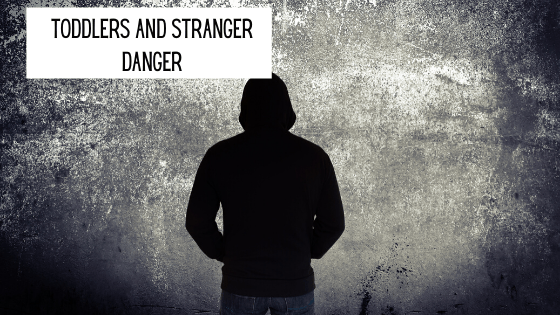
As parents, you can help ease this fear by doing the following, which is recommended by Kidshealth.org:
- Hold and comfort your child when they are around new people. When you make them feel safe, the new person won’t seem like a stranger anymore.
- Let your toddler be apart from you for short times at first.
- When you need to part from your child, say you’ll be back, give a hug, and go.
- Let your child learn that you always come back.
Young Kids and Things that go Bump in the Night
Around age 4 through 6, kids sometimes have a hard time deciphering what is real and worry about pretend things.
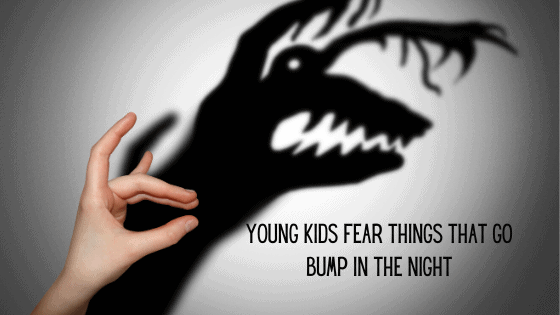
They often are afraid of the dark, loud noises, and “monsters”.
When your child expresses worrisome feelings about bedtime, develop a soothing routine. Read to your child and tell them that they are loved and safe.
Help you child develop courage and face their fears at a slow pace. For example, check together for under-bed monsters so that they can see there is nothing to worry about.
Older Kids and Real Life Dangers
It it common for older kids to worry about real life dangers. such as bad guys and natural disasters. Around this age, they can also start to worry about school.
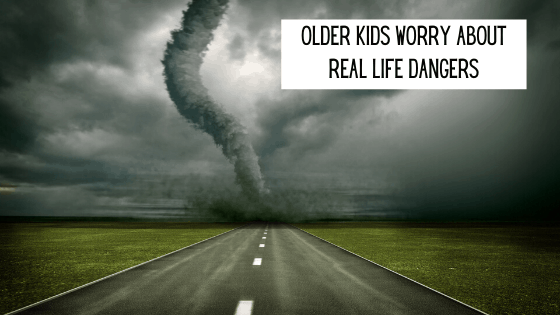
Talk with your child about his anxieties, and be sympathetic. It is important to explain to your child that many children have fears, but you are there to support them and help them get through it.
You can gradually encourage your child to come face-to-face with whatever they worry about.
Use these tips to talk to your kids about Scary World Events.
Teens and Social Fears
As kids roll into their teenage years, it is no surprise that they start to worry about social situations.
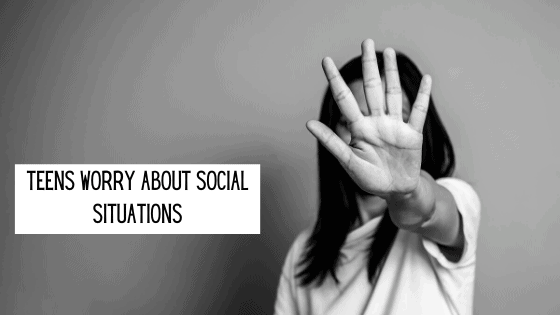
Let them know you believe in them, and that you are available to talk anytime they need you.
It is important to understand that, although worrying is normal, some kids could develop anxiety disorders at any age.
The AAP recommends that parents talk to your doctor if your child’s fears:
- seem extreme or last past the normal age
- cause your child to be very upset or have tantrums
- keep your child from doing things — like going to school, sleeping alone, or being apart from you
- cause physical symptoms (like stomach aches, headaches, or a racing heart) or your child feels breathless, dizzy, or sick
In fact, these are 5 times that I missed my own daughter’s anxiety symptoms. Take a look here!
Final Thoughts
In general, the experts at American Academy of Pediatrics (APP) recommend that, for younger children, you can comfort them by saying, “It’s OK, you’re safe.” Be sure to let your child know you’re there to protect them. Give affection and soothing words to help your child feel safe.
As your child gets older, talk and listen carefully to what they say. Help your child put feelings into words, and encourage them to try new things.
If you found this helpful, share it and follow us on Facebook for more simple parenting discussions.
